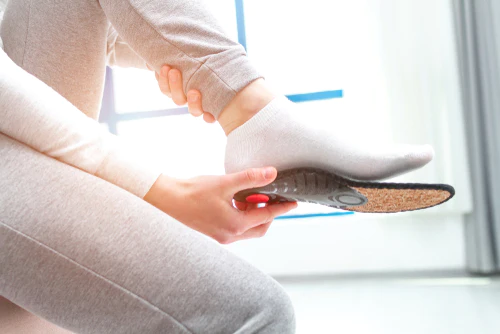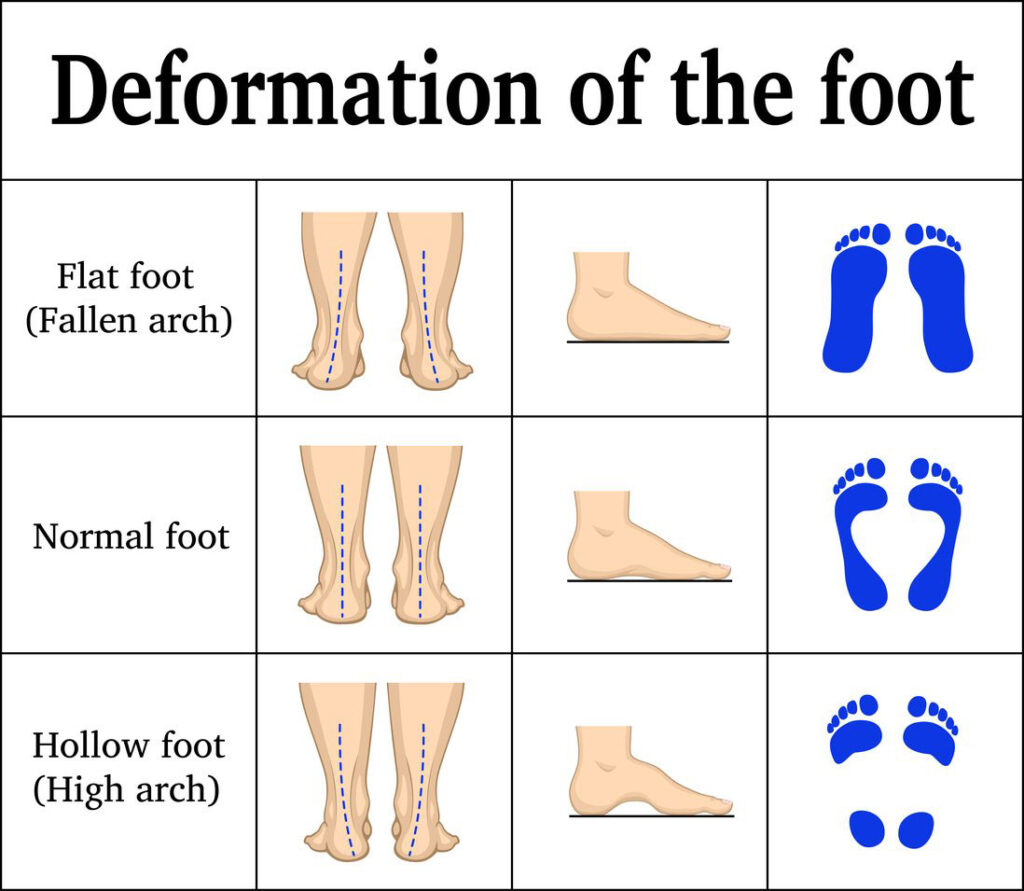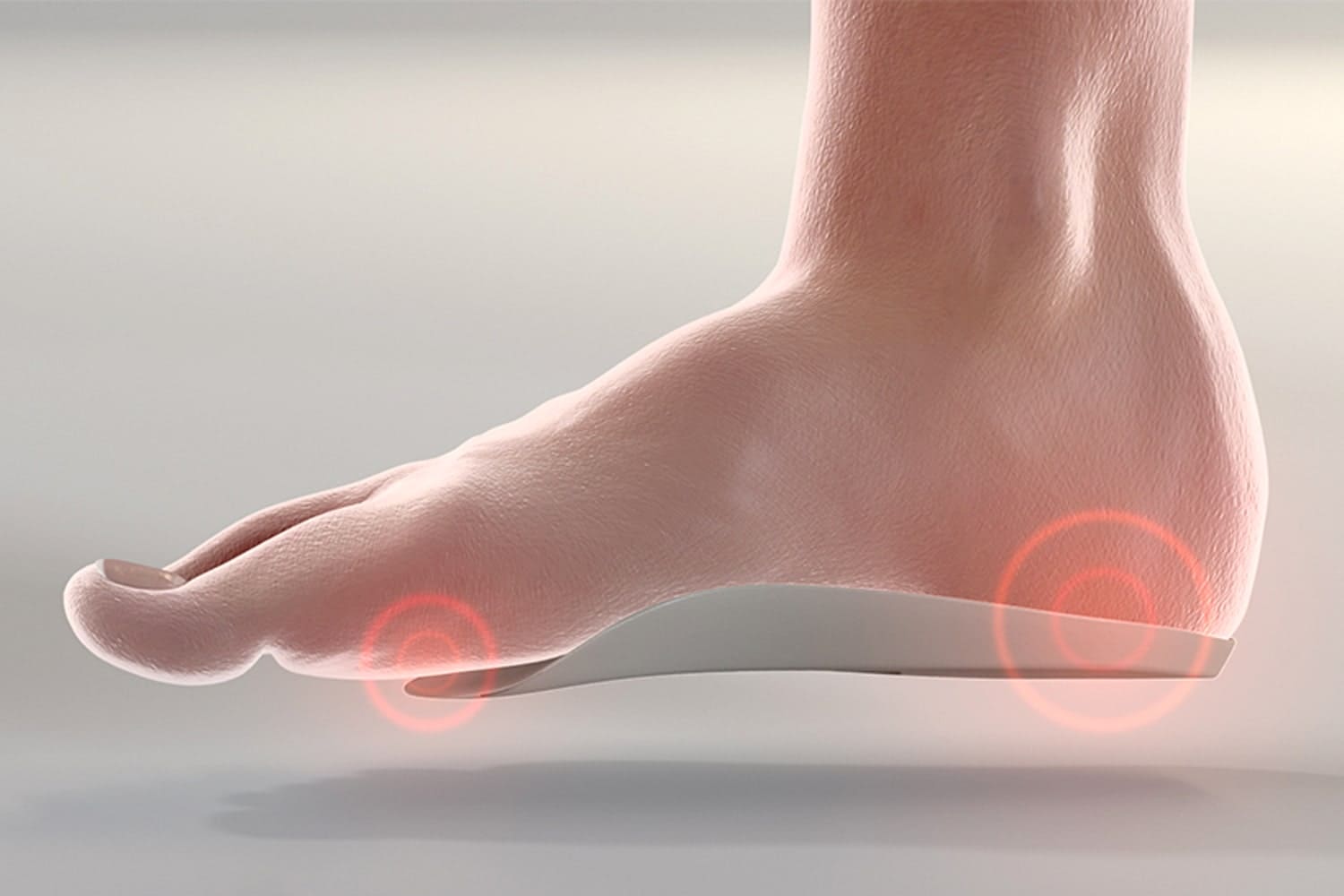Discover the transformative benefits of arch support for easing foot pain. From prevention to relief, learn how the right support can make a difference.
Introduction: Understanding Foot Pain and the Role of Arch Support
Foot pain is a common ailment affecting millions worldwide, often diminishing the quality of life and hindering daily activities. The root cause can vary from genetic predispositions to lifestyle choices, but one solution that consistently offers relief is proper arch support. This article delves into how arch support can alleviate foot pain, offering insights and advice for those seeking comfort and prevention.
Table of Contents
The Importance of Proper Foot Support
Having proper foot support is crucial for not just comfort, but for the overall health of your feet. This aspect of foot care is often overlooked, yet it plays a significant role in preventing and alleviating various foot-related issues. Foot supports, such as arch supports or orthotic insoles, are designed to provide the necessary support to the arch of the foot, helping to distribute weight evenly across the foot, reduce pressure on specific areas, and improve foot alignment.
How Arch Supports Work
Arch supports are engineered to fit the contours of your foot, specifically targeting the arch area. By doing so, they help to stabilize the foot, reduce the strain on the ligaments, muscles, and tendons, and promote a more natural foot alignment. This is particularly beneficial during activities that involve walking, standing, or running, as it minimizes the impact on the feet and reduces the likelihood of pain or injury.

Benefits for Daily Activities
The benefits of having proper foot support extend beyond just relieving pain. Here are some of the ways good arch support can enhance daily life:
- Improved Posture and Alignment: Proper foot support helps to align your feet correctly, which can positively impact your overall posture. This alignment can reduce stress on the knees, hips, and back, potentially alleviating discomfort in these areas as well.
- Increased Comfort During Activities: Whether you’re an athlete or someone who spends a lot of time on their feet for work, arch supports can significantly increase your comfort levels, enabling you to perform activities without the distraction of foot discomfort.
- Prevention of Foot Conditions: Regular use of arch supports can help prevent the development of foot conditions such as plantar fasciitis, flat feet, and overpronation. By addressing the root cause of these issues, arch supports can play a preventative role in foot health.
- Enhanced Athletic Performance: For athletes, proper foot support can lead to improved performance. By providing a stable base, arch supports allow for more efficient energy transfer during movement, which can enhance speed, agility, and endurance.
- Long-Term Health Benefits: Investing in good foot support can have long-term benefits for your health. Preventing foot conditions and improving posture can contribute to a higher quality of life free from the limitations that foot pain and discomfort can cause.
Identifying Common Foot Problems
Foot problems can range from temporary discomfort to chronic conditions that significantly impact one’s quality of life. Understanding common foot issues is the first step toward prevention and effective treatment. Here, we explore some prevalent foot conditions that affect people of all ages, highlighting the importance of recognizing symptoms early for timely intervention.

Plantar Fasciitis
One of the most common causes of heel pain, plantar fasciitis, involves inflammation of the plantar fascia—a thick band of tissue running across the bottom of your foot and connecting your heel bone to your toes. Symptoms often include a sharp, stabbing pain in the bottom of your foot near the heel, particularly severe with the first steps after waking up, after long periods of standing, or when getting up from a seated position.
Flat Feet (Fallen Arches)
Flat feet, or fallen arches, occur when the arches of the feet flatten out, allowing the entire sole of the foot to touch the floor when standing. This condition can lead to pain and discomfort because it alters the normal alignment of the legs and feet, potentially causing pain in the feet, ankles, knees, hips, and back. Symptoms may include foot pain, particularly in the heel or arch area, and difficulty standing on tiptoe.
Overpronation
Overpronation happens when the foot rolls inward excessively during the walking or running cycle, placing extra stress on the foot and ankle. It can lead to a host of issues, including heel pain, arch pain, and plantar fasciitis. Over time, this excessive inward rolling can also affect the alignment of the legs and hips, leading to knee and back pain.
Achilles Tendinitis
Achilles tendinitis is an overuse injury of the Achilles tendon, the band of tissue that connects calf muscles at the back of the lower leg to your heel bone. It’s common among runners who have suddenly increased the intensity or duration of their runs. Symptoms include pain and stiffness along the Achilles tendon in the morning, pain along the tendon or back of the heel that worsens with activity, and severe pain the day after exercising.
Bunions
A bunion is a bony bump that forms on the joint at the base of the big toe. It occurs when some of the bones in the front part of your foot move out of place, causing the tip of your big toe to get pulled toward the smaller toes and forcing the joint at the base of your big toe to stick out. Bunions can cause pain and discomfort, and the skin over the bunion might be red and sore.
Hammer Toe
Hammer toe is a condition in which the toe has an abnormal bend in the middle joint, making the toe bend downward to look like a hammer. It can be caused by wearing ill-fitting shoes, certain muscle or nerve conditions, or it may be congenital. Symptoms include pain at the top of the bent toe when wearing shoes and corns or calluses formed due to the toe rubbing against the inside of the shoe.
Finding Relief: How Arch Support Can Ease Foot Pain
The Role of Arch Support in Alleviating Foot Pain
Arch supports are more than just foot accessories; they are therapeutic tools that play a crucial role in foot health. By offering proper support to the arch area, they help distribute body weight more evenly across the feet, minimizing the pressure on any single point, such as the heel or ball of the foot. This distribution of pressure not only alleviates existing pain but also helps in preventing the development of foot problems.
Addressing Specific Foot Conditions
Many common foot conditions benefit from the use of arch support, including:
- Plantar Fasciitis: Arch supports can help reduce the strain on the plantar fascia by providing a cushioning effect and supporting the arch, thus easing the pain associated with plantar fasciitis.
- Flat Feet: For those with flat feet, arch supports can compensate for the lack of natural arch, providing the support necessary to align the foot correctly and reduce discomfort.
- Overpronation: By stabilizing the foot and preventing excessive inward rolling, arch supports can correct overpronation, thereby relieving stress on the ankles, knees, and hips.

Enhancing Daily Comfort and Mobility
For individuals experiencing foot pain, every step can be a reminder of their discomfort. Arch supports can change this narrative by enhancing the comfort of footwear, making daily activities more manageable and less painful. This improved comfort can lead to increased mobility, enabling individuals to maintain an active lifestyle without being held back by foot pain.
Long-Term Benefits
The benefits of using arch supports extend beyond immediate pain relief. Long-term use can lead to a correction in foot alignment, which can have positive effects on overall posture and gait. This alignment can reduce the likelihood of injuries and other foot conditions developing in the future, offering a preventive measure against chronic foot issues.
Personal Testimonies and Expert Opinions
The effectiveness of arch supports in easing foot pain is not just a matter of theoretical benefit; it is supported by countless personal stories of relief and improvement. Healthcare professionals, including podiatrists and physical therapists, often recommend arch supports as part of a comprehensive treatment plan for foot pain. Their expert opinions underscore the importance of proper foot support in maintaining foot health and mobility.
Types of Arch Support Solutions
Insoles
Insoles are one of the most accessible and widely used forms of arch support. They are designed to be inserted into your existing footwear, providing an additional layer of support and cushioning. Insoles come in various materials, such as foam, gel, or a combination, each offering different levels of support and comfort. They can be purchased over the counter at pharmacies and specialty stores, with options ranging from general support to those designed for specific activities, like running or hiking.
Orthotic Devices
Orthotic devices are custom-made supports designed to fit the unique contours of an individual’s foot. Unlike over-the-counter insoles, orthotics are prescribed by a healthcare professional after a thorough examination of the foot, gait analysis, and sometimes, imaging studies. Orthotics can be made from various materials, including hard plastic, carbon fiber, or flexible materials, and are tailored to address specific foot conditions, such as overpronation, plantar fasciitis, or flat feet.
Custom vs. Over-the-Counter
The choice between custom orthotics and over-the-counter insoles largely depends on the individual’s specific needs, severity of symptoms, and budget.
- Over-the-Counter Insoles: These are best for individuals seeking general support, mild pain relief, or prevention of potential foot problems. They are more affordable and immediately available, making them a good first step for those exploring arch support options.
- Custom Orthotics: These are ideal for individuals with specific foot conditions, severe pain, or unique foot structures that require a tailored approach. While more expensive, their custom fit provides targeted support and can be more effective in addressing complex or chronic foot issues.
Shoe Inserts
Apart from insoles and orthotics, there are also simpler shoe inserts available that can offer arch support. These can include pads or cushions that target the arch area specifically, providing a temporary solution for discomfort or support during certain activities.
Supportive Footwear
Finally, some shoes are designed with built-in arch support, catering to those who require additional foot stability but prefer not to use separate insoles or orthotics. Supportive footwear ranges from casual shoes to athletic sneakers, each designed with specific arch support features to aid in foot alignment and pain relief.
How to Choose the Right Arch Support
Understand Your Foot Type
The first step in choosing the right arch support is to understand your foot type and the specific issues you’re experiencing. Do you have flat feet, high arches, or neutral arches? Are you dealing with foot conditions like plantar fasciitis, overpronation, or bunions? Identifying your foot type and any existing conditions will guide you towards the type of support you need.
Determine the Level of Support Required
- Mild Support: Suitable for individuals experiencing occasional foot pain or discomfort.
- Moderate Support: Ideal for those with noticeable arch problems or regular foot pain.
- Maximum Support: Necessary for individuals with severe foot conditions, significant arch issues, or chronic pain.
Consider Your Activities
The right arch support can vary depending on your daily activities. Athletes might need different support compared to someone who stands all day at work. Consider the type of activities you engage in most frequently and select arch support designed for those specific movements and stresses.
Material and Durability
Arch supports are made from various materials, each offering different benefits. For example, memory foam provides cushioning and comfort, while hard plastic or carbon fiber offers more structured support. Consider the material’s durability, especially if you lead an active lifestyle or have demanding daily activities.
Fit and Comfort
Proper fit is crucial for the effectiveness of arch support. It should fit snugly in your shoes without causing discomfort or altering your gait. Try different sizes and shapes to ensure a good fit. Comfort is equally important, as you’ll be more likely to wear the arch support consistently if it feels good on your foot.
Seek Professional Advice
If you’re unsure about the right arch support for your needs, seek advice from a healthcare professional, such as a podiatrist. They can assess your foot structure, diagnose any specific conditions, and recommend the best type of support for you. This is particularly important for individuals with chronic pain or specific foot conditions.
Read Reviews and Testimonials
Before making a purchase, read reviews and testimonials from other users. This can provide insight into the effectiveness of the arch support for various conditions and activities, helping you make an informed decision.
The Science Behind Arch Support
Biomechanics of the Foot
The foot’s arch plays a pivotal role in its biomechanics, functioning as a natural shock absorber. Upon impact, such as when walking or running, the arch flattens slightly to distribute the force evenly throughout the foot. This mechanism helps to mitigate stress on the lower extremities and maintain balance. However, when the arch does not function properly due to structural abnormalities or weakness, it can lead to increased stress on the foot and surrounding areas, resulting in pain and discomfort.
How Arch Support Helps
Arch supports are designed to mimic the foot’s natural arch, providing the support that the foot may lack due to congenital conditions, injury, or wear and tear. By doing so, they help to:
- Distribute Pressure Evenly: Arch supports help to evenly distribute body weight across the foot, reducing pressure on any single point, thus minimizing pain and discomfort.
- Enhance Shock Absorption: They improve the foot’s natural shock-absorbing capabilities, reducing the impact on the joints and spine.
- Correct Alignment: Proper arch support can correct abnormal foot mechanics, such as overpronation or supination, thereby improving overall alignment and reducing strain on the knees, hips, and back.
- Improve Foot Function: By supporting the arch, these devices can enhance foot function during walking and running, leading to more efficient movement and reduced fatigue.
Research Findings
Numerous studies have supported the benefits of arch support for individuals with foot problems. Research has shown that the use of arch supports can significantly reduce pain and improve function in conditions like plantar fasciitis, flat feet, and overpronation. Additionally, there is evidence to suggest that proper foot support can prevent the onset of foot pain in people who stand for prolonged periods or engage in high-impact activities.
Custom vs. Over-the-Counter Arch Support
The debate between custom and over-the-counter arch supports centers on the level of customization and the specific needs of the individual. Custom orthotics, designed based on a detailed assessment of the foot’s structure and biomechanics, can provide tailored support that addresses specific issues. However, over-the-counter options can also be effective, especially for individuals with less severe conditions or those seeking general support and comfort.

Preventative Measures for Foot Health
Regular Foot Inspections
Regularly inspect your feet for any changes or signs of problems, such as cuts, blisters, redness, swelling, or nail changes. Early detection of these issues can prevent them from becoming more serious. Pay particular attention if you have diabetes, as foot health is a major concern and requires vigilant care.
Proper Footwear
Wearing the right shoes is paramount to foot health. Shoes should fit well, offer good arch support, and provide enough room for your toes. Avoid high heels and shoes with pointed toes, as they can lead to bunions, hammertoes, and other foot issues. Opt for footwear that matches your activities, ensuring that your feet are properly supported whether you’re at work, exercising, or relaxing.
Maintain Good Hygiene
Keeping your feet clean and dry helps prevent fungal infections such as athlete’s foot. Wash your feet daily with soap and water, and dry them thoroughly, especially between the toes. Moisturize your feet regularly to prevent dry skin and cracks but avoid applying lotion between the toes to reduce the risk of fungal infections.
Exercise and Stretch Your Feet
Regular foot exercises and stretches can strengthen the muscles, improve flexibility, and support the arches. Simple exercises like toe curls, heel raises, and ankle rotations can be done at home to enhance foot health. Stretching the Achilles tendon and the plantar fascia can also help prevent and alleviate pain.
Avoid Walking Barefoot
Walking barefoot, especially on hard surfaces, can increase the risk of injury and infection. It can also lead to issues such as plantar fasciitis and heel pain due to the lack of arch support. When at home, consider wearing slippers or sandals that offer some level of support.
Proper Nutrition and Hydration
A balanced diet rich in calcium, vitamin D, and anti-inflammatory foods can support bone health and reduce the risk of foot problems. Staying hydrated helps maintain the health of your skin, including the skin on your feet, preventing dryness and cracks.
Regular Check-ups with a Podiatrist
Even if you do not have existing foot issues, an annual check-up with a podiatrist can be beneficial. A podiatrist can identify potential problems early and provide advice on foot care, shoe recommendations, and whether orthotic devices might be beneficial for you.
Maintenance and Care for Arch Supports
Regular Cleaning
- Remove Debris: Daily use can cause dirt, dust, and other debris to accumulate on your arch supports. Gently tap them against a hard surface to remove any loose debris.
- Wash as Directed: For most over-the-counter arch supports made of non-absorbent materials, washing with mild soap and lukewarm water can help maintain cleanliness. Use a soft brush or cloth to gently scrub away any dirt. For custom orthotics, follow the care instructions provided by your podiatrist, as some materials may require specific cleaning methods.
- Air Dry: Always air dry your arch supports completely before placing them back in your shoes. Avoid direct heat sources like hair dryers or radiators, as high heat can warp or damage the material.
Regular Inspection
- Check for Wear and Tear: Inspect your arch supports regularly for signs of wear and tear, such as thinning, cracks, or loss of structural integrity. Pay special attention to areas that bear the most weight or undergo the most stress.
- Monitor for Comfort and Support: Notice any changes in the comfort or support level of your arch supports. Over time, they may compress or lose their shape, reducing their effectiveness.
Rotation and Replacement
- Rotate Between Pairs: If possible, rotate between two pairs of arch supports. This allows one pair to rest and air out while you wear the other, extending the lifespan of both.
- Follow Replacement Guidelines: Over-the-counter arch supports typically last 6 to 12 months, depending on the frequency of use and the material’s durability. Custom orthotics can last longer, often several years, but they still require periodic evaluation by a podiatrist to ensure they remain effective. Be proactive about replacing your arch supports as needed to maintain optimal foot health.
Proper Storage
- Keep Dry and Cool: Store your arch supports in a dry, cool place when not in use. Excessive moisture or heat can alter the shape and effectiveness of the supports.
- Maintain Shape: When not in your shoes, store your arch supports in a way that helps maintain their shape. Avoid folding or stacking heavy items on top of them.
Handling Odors
- Use Odor-Control Sprays: If odor becomes an issue, consider using a spray designed for shoe odor. Ensure it’s compatible with the material of your arch supports.
- Activated Charcoal: Placing arch supports near activated charcoal or using charcoal insoles can help absorb odors without damaging the supports.
Addressing Skepticism: Myths vs. Facts
Myth 1: Arch Supports Weaken Feet
Fact: Arch supports do not weaken the feet. Instead, they provide necessary support to the foot’s arches, which can help prevent pain and injury. Proper arch support can actually strengthen foot muscles by enabling more natural foot movement and alignment.
Myth 2: Only Athletes Need Arch Supports
Fact: While athletes may benefit significantly from arch supports due to the demands of their activities, anyone can experience foot pain or discomfort that arch supports can alleviate. People who stand for long periods, have existing foot conditions, or want to prevent future foot problems can also benefit from using arch supports.
Myth 3: Arch Supports are Uncomfortable
Fact: When properly fitted, arch supports should be comfortable. There may be a brief adjustment period as your feet get used to the additional support, but any significant discomfort suggests that the arch supports may not be the correct type or size for your feet.
Myth 4: One Size Fits All
Fact: Arch supports come in various sizes and styles to accommodate different foot shapes, sizes, and conditions. Over-the-counter options offer general support, but custom orthotics are tailored to the specific needs of your feet, providing targeted support and comfort.
Myth 5: Arch Supports Can Cure All Foot Problems
Fact: While arch supports can alleviate discomfort from many foot conditions and improve overall foot health, they are not a cure-all solution. Some conditions may require additional treatments, such as physical therapy, medication, or surgery. Arch supports are most effective as part of a comprehensive foot care plan.
Myth 6: Custom Orthotics are Always Better Than Over-the-Counter Options
Fact: Custom orthotics are specifically designed for your feet and can offer precise support for complex or severe foot conditions. However, over-the-counter arch supports can be highly effective for people with mild to moderate foot discomfort or those looking for general support. The best option depends on individual needs, severity of symptoms, and budget.
Myth 7: You Only Need Arch Supports in One Pair of Shoes
Fact: For optimal benefits, arch supports should be used consistently across all footwear. Moving them between shoes or purchasing multiple pairs can ensure that your feet receive continuous support, regardless of the shoes you wear.
WHERE TO BUY
FAQs
- How does arch support help with foot pain?
- Can arch support prevent foot problems?
- Are custom orthotics better than over-the-counter options?
- How long does it take to feel the benefits of arch support?
- Can children benefit from arch support?
- Is it necessary to wear arch supports all the time?
Conclusion: Taking the Step Towards Relief
In conclusion, arch support represents a simple yet effective solution for those suffering from foot pain. By making informed choices and integrating support into their lives, individuals can enjoy improved foot health and a return to pain-free activities. Encouragement to explore the options and take action can be the first step towards lasting relief.











Your article helped me a lot, is there any more related content? Thanks!